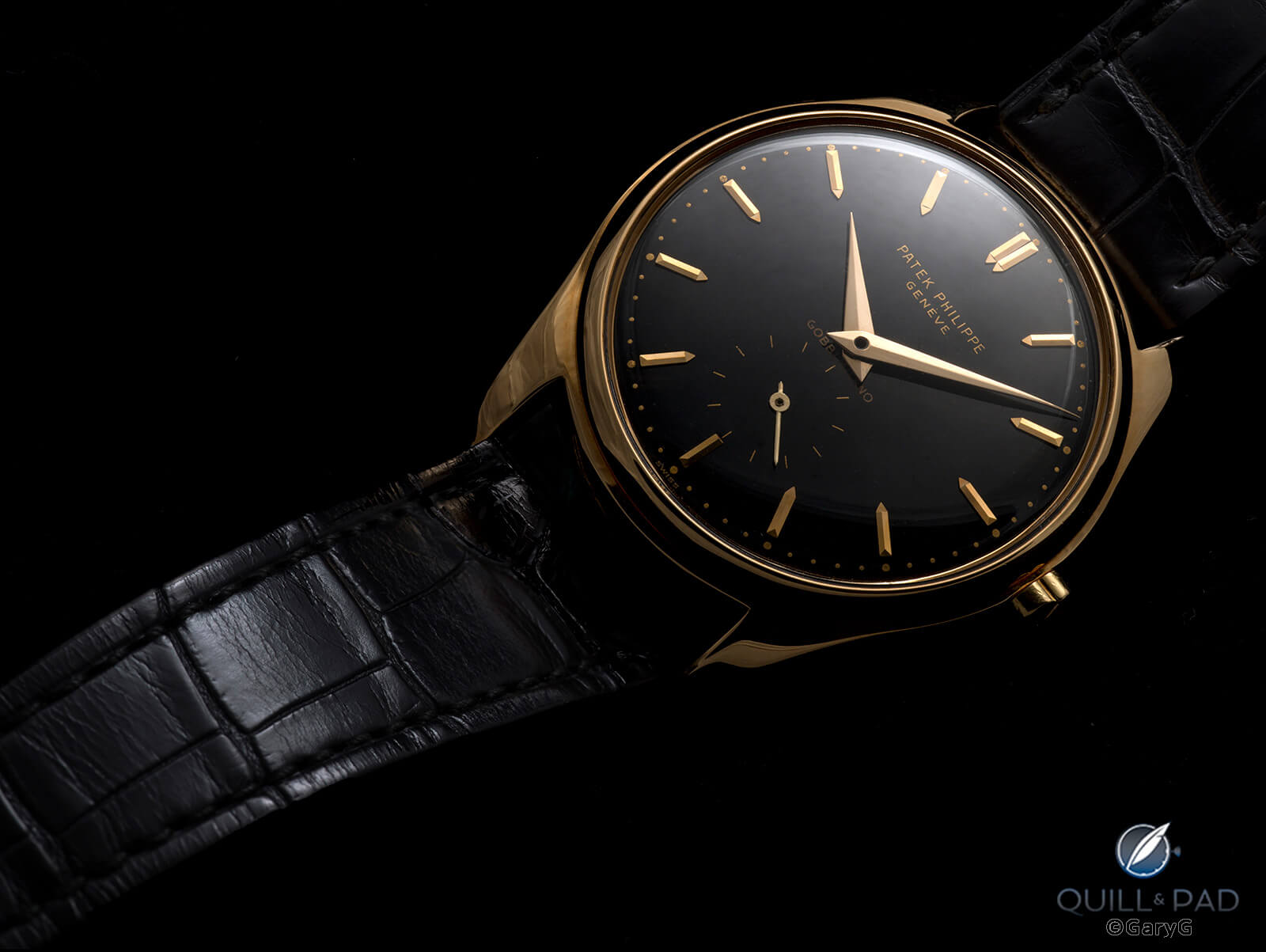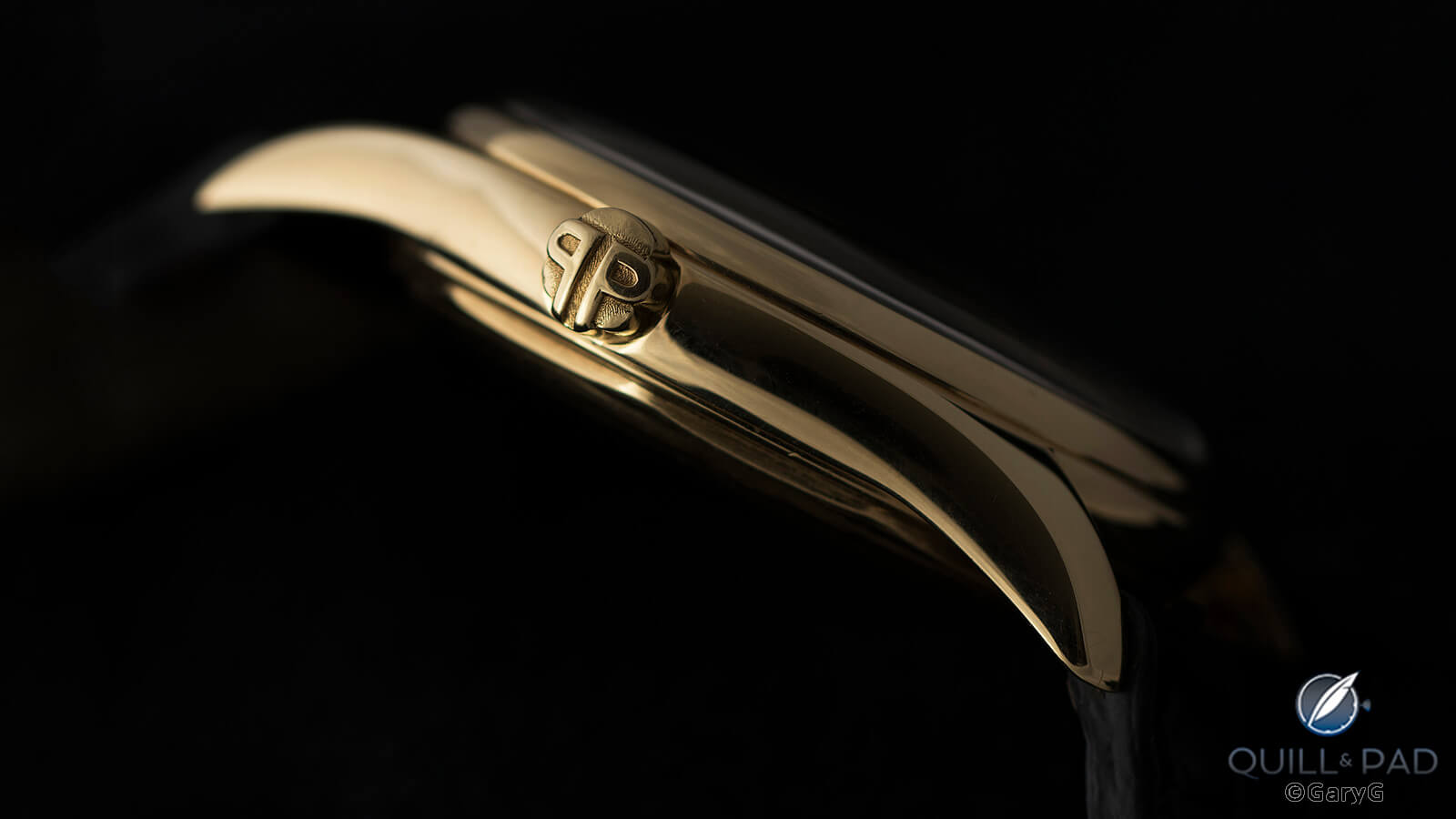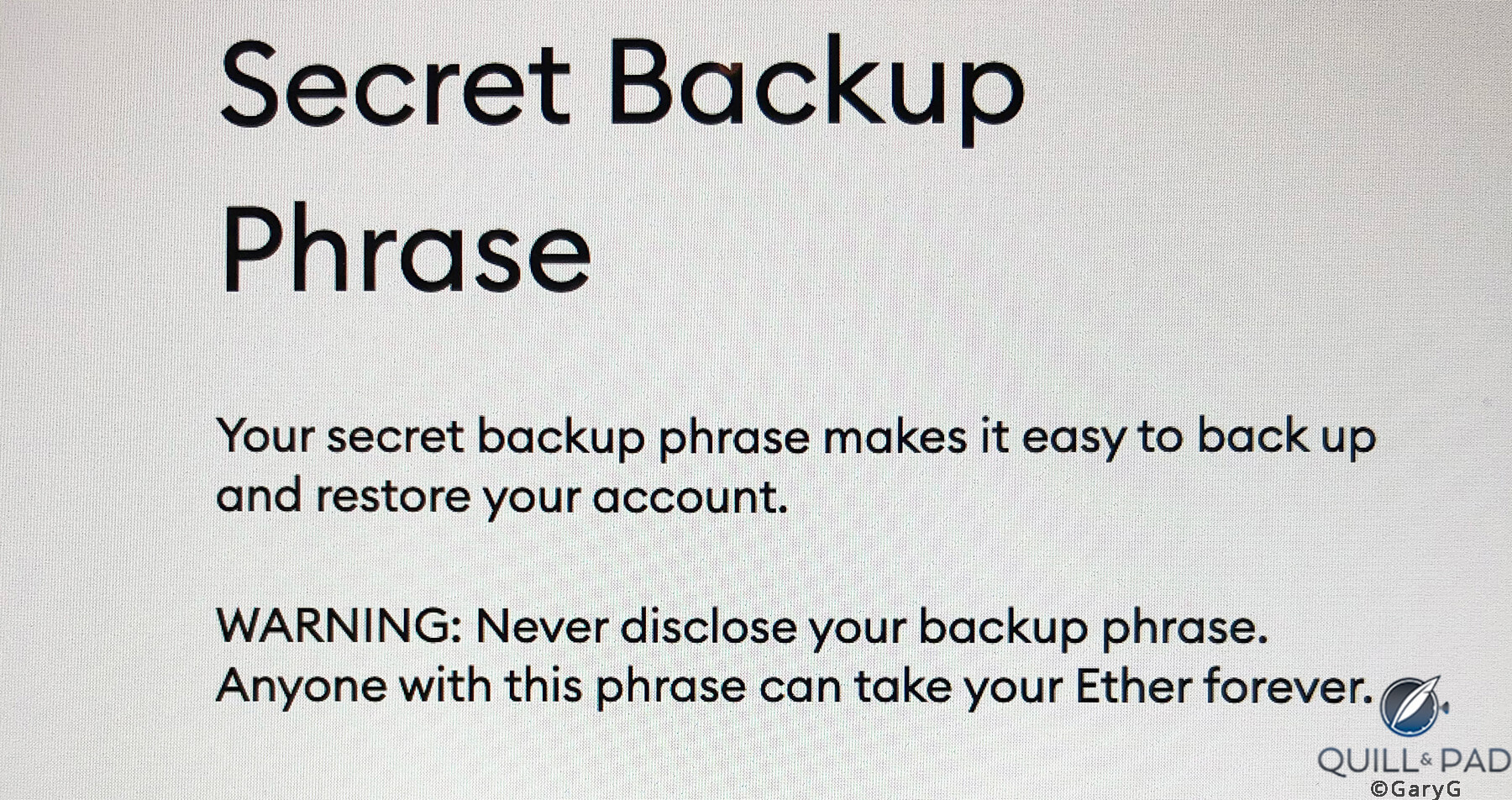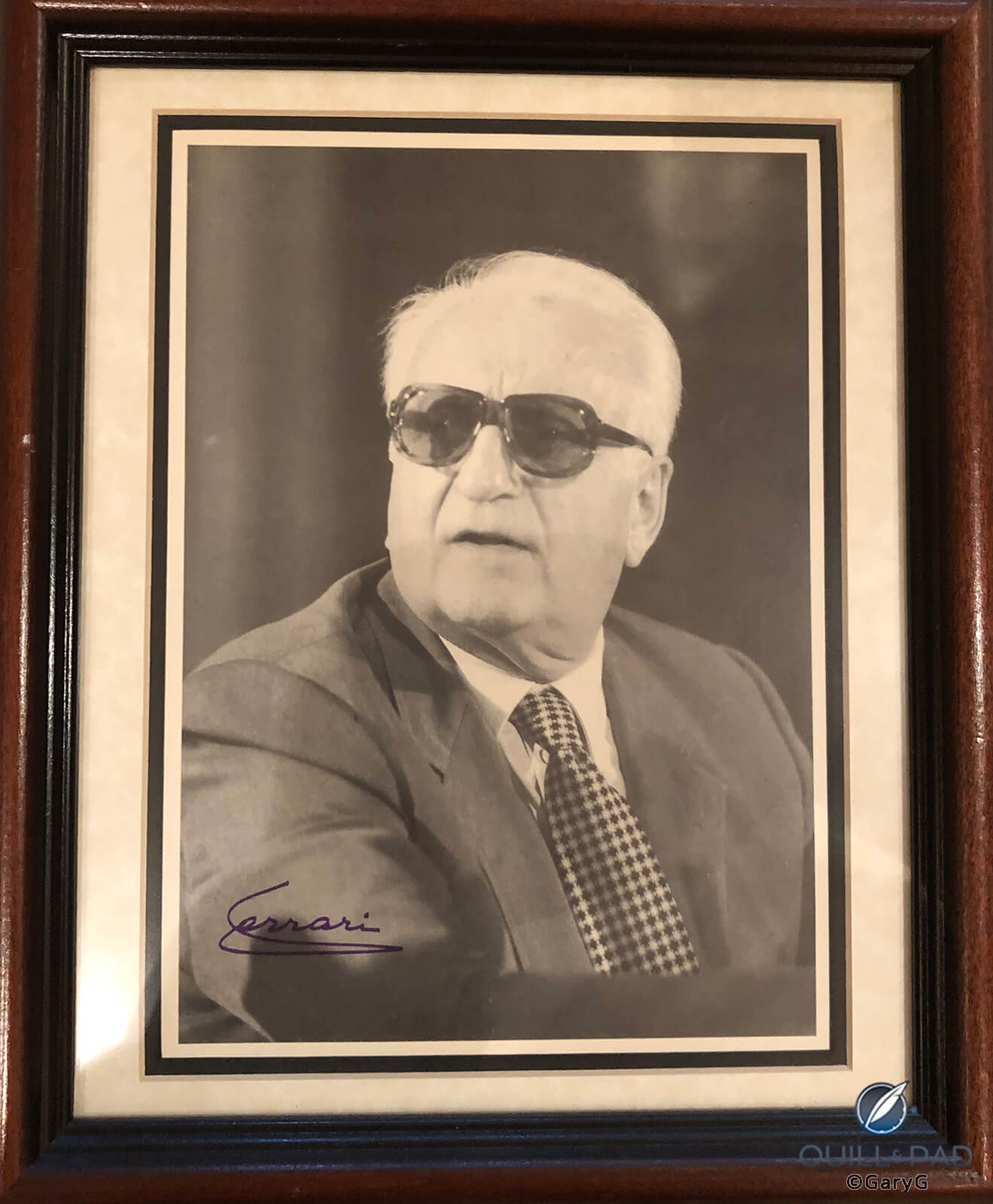by GaryG
Do you collect things?
And by “things,” I’m not necessarily referring to watches, but to other items including books, toys, sports memorabilia, film props, coins, stamps, and photographs – all of which make up a global market for collectibles that amounted to $370 billion in 2020.

Possibly collectible, but not a baseball card: Patek Philippe Reference 2526 Gobbi Milano
While watch enthusiasm fills many of my waking hours, I have managed to accumulate a few other items that fall into the “collectible” category, based in each case almost exclusively on an emotional tie to the piece or its subject matter.
My favorite is an autographed example of the famous 1965 Neil Leifer image of Muhammad Ali standing over a fallen Sonny Liston. As a side note, one of the best bits of this image is the face of a photographer, visible in the space between Ali’s legs, who realizes that he sat on the wrong side of the ring that night.

Classic image: shot by Leifer, signed by Ali
Even with the recent boom in sports memorabilia prices, this probably isn’t that valuable an item. To the extent that it has value, however, comes down to four things: the importance of the photo, the rarity of the print, the autograph, and – very importantly – the assurance that it is an authentic item.

Guaranteed authentic: seal and certificate accompanying the Muhammad Ali photo
Above, you can see the seal and authenticity certificate that accompanied the framed image, and on the lower right corner of the photographic print itself there is another small gold seal. Seems kosher, but wouldn’t it be great to have irrefutable evidence that this photo and its inscription are authentic in every way, down to the serial number?
Fast forward: trends converge
Well, it’s 2021 now and several things have happened in the years since I bought that photo at a charity auction.
- The power and sophistication of software for computer-generated imagery has increased exponentially, opening the door to create large volumes of art, including videos and vector graphics that exist only in digital form.
- With the boom in digital media, including social media, even photographs of real physical objects are stored and displayed predominantly in digital form. Put another way, when was the last time you printed off a photo and put it in an album?
- Blockchain technology now allows almost foolproof authentication both of financial transactions and things like digital video and photo files that are uploaded securely in a way that “mints” them as tradeable tokens (called non-fungible tokens or NFTs) that live on a Blockchain.
In short, we have a flood of potentially collectible digital artworks meeting a secure way of buying and selling that ensures their authenticity.

Potentially collectible? Digital image of the author’s Patek Philippe Reference 2526
The watch world was not deaf to these trends. On March 31, 2021, Jean-Claude Biver and Swiss cybersecurity firm WISeKey announced the “world’s first NFT auction of a luxury watch,” specifically a “digital twin” of Biver’s Hublot Bigger Bang All Black Tourbillon Chrono.
Despite the hype, that auction failed to meet its reserve; but on April 7, 2021 Jacob & Co. did sell a video NFT of a virtual watch based on its Epic SF24. This ten-second animated rendering adds a tourbillon to the design of the original watch and displays cryptocurrency abbreviations rather than city names on its split-flap display – and reportedly sold for the equivalent of $100,000.

Screenshot of the Jacob & Co. SF24 Tourbillon NFT (image courtesy Jacob & Co.)
A little help from my friend
Just as Biver and Jacob were getting into the cyber-asset act, artist Alexa Meade contacted me to ask whether I had any thoughts on the suitability of her work for NFT auctions. I rapidly confessed my ignorance on the topic but did put her in touch with a friend in the art world who could assist, leading to Meade’s first NFT auction, a successful collaboration with model Allison Harvard.

Genesis auction: announcement for Alexa Meade’s first NFT sale
As far-too-generous payback, Meade volunteered to spend time helping me to set up my own NFT auction of some of my watch photographs.
She had faith in me, but I did wonder the following.
- Could photographs of actual watches (as opposed to static or animated digital renderings of timepieces) find an audience in the NFT world?
- Would potential bidders be interested in an NFT created by an independent artist rather than by (as in the case of Biver and Jacob) the creators of the corresponding physical watches?
- Would my personal outreach through networks of friends and my social media accounts be sufficient to draw viewers – and bidders – to the auction?
- Were my thoughts on potential auction pricing justified – or, more fundamentally, would anyone actually bid?

Abridged version: low-resolution version of one of the NFT auction photos
I thought about it a bit and reached four conclusions.
- Nothing ventured, nothing gained! Some folks scoffed when I moved away from the forums to start contributing to Quill & Pad in 2014, and I’m sure that a few chuckled as well when I started my Instagram page a year or so later, but those decisions are looking pretty good now.
- If people would be willing to pay actual cash for a book of my photos or a large photographic print to hang on their office walls, why shouldn’t at least some be willing to pay for unique access to an authenticated digital file containing one of my original images in full resolution (rather than the downsized and compressed versions we use here)?
- I’d have the best chance of success on the first go if I used images of an unusual watch rather than yet another set of photos of the latest Patek Philippe Nautilus or Audemars Piguet Royal Oak. And some unusual perspectives would probably help as well.
- There would likely never be a better opportunity to get up to speed quickly and successfully than the one that Alexa Meade had put on the table.

Unusual perspective: edge view of the Patek Philippe Reference 2526 from the NFT auction
Staging the auction: the abridged version
I won’t drag you through each and every keystroke of executing an NFT auction, but let’s start with point three above: the photos.
I’m fortunate to own several pretty rare watches, but as a combination of striking visual appeal and rarity the Patek Philippe Reference 2526 “Gobbi Milano” is probably at the top of the list. Reference 2526 is a legendary Patek Philippe reference as the first self-winding watch made by the company; my particular example is not only the relatively unusual yellow gold/black enamel dial variant and double-signed on the dial by retailer Gobbi Milano, but is the only such combination certified as original on its Patek Philippe extract from the archives.
And mine is one of three Reference 2526 watches with a custom Voutilainen-Cattin display back, showing Caliber 12-600 AT in all its glory.

See what I did there? Composite image, Patek Philippe Philippe Ref. 2526 with rotor “removed”
I selected a few of my favorite images of the watch and took a few new ones to fill out an assortment of six photos for the auction, in keeping with Meade’s advice on how many to include.
The image above was perhaps most special in that it is a composite of two images shot with the watch turned 180 degrees in between and then combined to “erase” the body of the rotor and reveal the entire movement beneath.

Crypto tycoon: just enough “gas” in the tank to pay the fees for the first listings
With photos in hand, the next steps were pretty mechanical: we used MetaMask to establish a cryptocurrency wallet and Wyre to transfer in enough money using my bank debit card for the “gas” fees needed to fund the Blockchain transactions involved in the auction.
The NFT art world is Ethereum based, so I bought a small amount of Ether – my first venture into the cryptocurrency world. There’s a decent amount of secret-agent-style language, lots of buttons to click, and arcane passwords and phrases to record (and not lose), but it does create a sense of security.

Don’t lose the attached: secret access code instructions, MetaMask
Onward to OpenSea, a site both acting as a consolidated source for NFT auctions on other sites such as Foundation and hosting auctions as well.
For a new and little-known exhibitor like me, OpenSea has advantages, including a one-time fee for sellers rather than per-listing fees. And for the environment, it mitigates some (but not all) of the concerns about the energy consumption of Blockchain use by bringing the Blockchain into play only when a transaction is completed; so no sale, no greenhouse gas load.

Brevity matters: GaryG_1 masthead on OpenSea.io
We selected the sequence in which the images should appear in the auction, picked profile photos, and worked on titles and blurbs for each image and for the overall page. Meade’s guidance was tremendously useful here, she policed each caption to ensure consistency of form and converted my page-long bio into the single clear introductory sentence that now appears under my photo on OpenSea.

And we’re live: NFT images just after auction launch
Other decisions included whether to conduct a standard ascending value auction or a descending “Dutch” auction in which the asking price drops over the auction and the first bid wins.
OpenSea made the second choice fairly easy as a minimum reserve price of 1 ETH (a little over $2,000 at the time of the auction) is required for an ascending value auction and I wasn’t so vain as to think that my photos would do that well! After some discussion, we settled on a five-day Dutch auction with the asking price slowly dropping from 1 ETH to 0.1 ETH.

Promotion matters: advertising image used on Instagram, Twitter, and Facebook
As a final step, Meade helped me put together promotional images to post on my various social media accounts. One limitation of the current state of NFT auctions is that the sites are poorly organized and not very searchable, so it’s up to the artist to get the word out that their work is actually on sale.
Over the next few days, I regularly posted the promotions, pinged my contacts, and monitored the responses from both friends and online followers.
What happened and what I learned
On the final day of the auction, with prices for each image trending to the closing price of 0.1 ETH, a welcome alert arrived from OpenSea: one of the NFTs had sold!

Winner! Sale notice on one of the author’s auction NFTs
The winning bid entitles the winner to private rights to view the full-resolution image now residing in their own Ethereum wallet and to sell the NFT in the future just as you would sell a physical watch, with a small percentage of any resale revenues reverting to me.
The buyer also has bragging rights of having bought the very first timepiece-related NFT from a private artist ever sold, and (in the unlikely event that I’m onto something significant here) the only NFT to sell from my so-called genesis sale.
In addition to learning that there’s at least one person within my current range of communications willing to part with the equivalent of 200 bucks for one of my full-resolution watch images, I now know enough about the mechanics of conducting these auctions to repeat the task in the future and to consider adding features for winning bidders such as including the source images for a focus stack along with the final stacked image within an NFT.
I also learned a fair amount about how members of the watch community, including close friends, view the world of digital collectibles, and you likely won’t be surprised to learn that the comments have ranged from strong support to bafflement to ridicule.
I’ll give a special tip of the hat to a pal who suggested that it wouldn’t be too surprising if some dimwit started identifying himself as “Non-Fungible Time,” inspiring me to launch the only appropriate response: @nonfungibletime.

The author’s newly added Instagram page, @nonfungibletime
Are NFT-based digital collectibles the future of art? I don’t know.
Can Blockchain or similar technologies overcome the immense energy use and greenhouse gas emissions associated with peer network authentication today? I’m told yes, but I can’t verify it based on my own knowledge.
Will digital photographs of “real” objects, including luxury goods, emerge as a robust NFT category? I don’t know.
In an increasingly digital world, does it make sense that authenticated digital collectibles will have inherent value? Of that I am sure – and I’m keen to participate in that journey, if only on a small scale.

Parting shot: the author’s definitely non-digital collectible photograph of Enzo Ferrari, signed and given as a gift by Ferrari to Luigi Chinetti Sr.
For current and upcoming NFT auctions from GaryG, please visit opensea.io/accounts/
Quick Facts NFT, Unobstructed movement view of Patek Philippe Ref. 2526
Description: composite digital image created from two source image stacks, offset 180 degrees and combined to create the illusion of the removal of the automatic winding rotor
Image dimensions: 3871 x 3871 pixels
File size: 5.19 MB
Date original images photographed: April 9, 2020
Shot with: Hasselblad X1D II with XCD 120 macro lens; f/16, 1/350, ISO 100
NFT Market value: 0.11568 ETH on April 13, 2021
You may also enjoy:
Mixing Money And Watches: A Collector’s Lament On The Current State Of Our Hobby
Watches And Art: At Baselworld 2017 With Artist Alexa Meade And Maurice Lacroix





















































Leave a Reply
Want to join the discussion?Feel free to contribute!